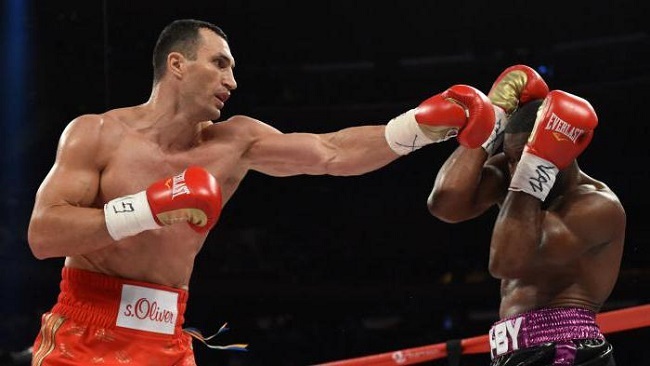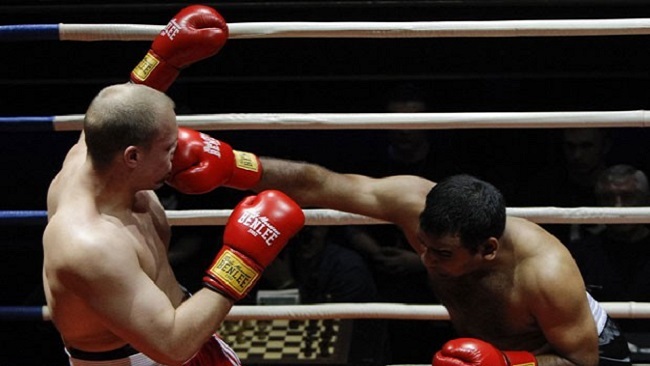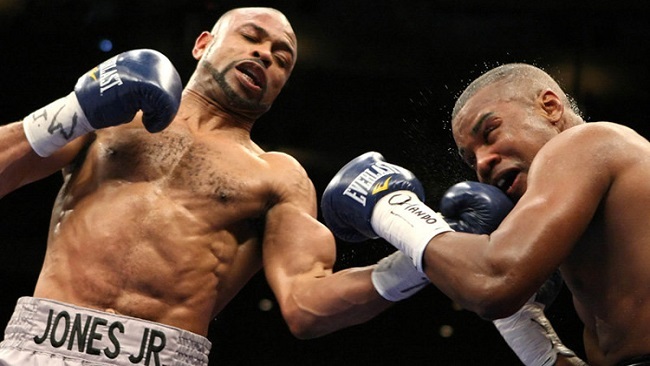Boxing or boxing is a combat sport in which fighters wear padded gloves and use their hands to attack and defend.
The goal in boxing is to deliver blows to score or knock out the opponent, following a set of predetermined rules. The fights take place in a boxing ring, a cushioned platform surrounded by ropes that delimit the combat area.
A boxing match ends when the total time runs out or when one of the fighters is unable to continue the match.
boxing history
Boxing was already a popular and well-developed sport in Ancient Greece and was introduced into the Olympics in 688 BC. The fighters wore leather bands on their hands and the fights only ended when one of the fighters admitted defeat or couldn't get the fight.
In ancient Rome, boxing matches took place in amphitheaters and usually only ended with the death of one of the fighters. It was common to use pieces of metal tied to the hands to make more impact.
The fights took place in a circle drawn on the ground, which later gave rise to the idea of a ring that still prevails today.
After the fall of the Roman Empire, boxing only reappeared in the 18th century in England. At the time, fights were held with free hands. When fights became too violent, rules were established for wearing gloves and finally dividing the fight into rounds.
boxing rules
A boxing match consists of a variable number of rounds (usually nine to twelve), each with three minutes, separated by one-minute intervals.
The fight is supervised by an in-ring referee who controls the fighters' conduct and cares for their security. The referee is responsible for separating the fighters, counting down when one of them is knocked down, interfering in cases of fouls, etc.
At each interval, the fighters head to a corner of the ring (corner) and can rest and receive instructions from their team.
If one of the fighters is knocked down, the other must go to a neutral corner of the ring (corner where your team or the opponent's team is not. If at the end of the countdown the knocked down fighter does not get up, the referee will declare a knockout (knockout) and the fight ends immediately.
During the entire fight, three judges outside the ring decide the scoring of the rounds through a combination of four criteria:
effective aggressiveness: Fighters need to be aggressive effectively. The winner of the round will be the fighter who actually lands the most blows (not just delivers) and avoids the opponent's blows.
dominance in the ring: the winner of the round will be the fighter who controls the action and imposes his will and style.
Defense: the judges take into account the effectiveness with which the fighters dodge, parry and defend blows.
Strong and clean blows: Strong and cleanly hit punches are worth more than weak or partially connected punches. This criterion must be analyzed together with the number of hits hit.
Boxing scoring system
Based on the above criteria, judges award points to fighters at the end of each round. The scoring system works as follows:
Judges score on a maximum scale of 10 points. The winner of the round receives 10 points and the loser receives 9 points.
A fighter loses 1 point every time he suffers a knockdown (be knocked down). If both fighters are knocked down in the same round, the knockdowns cancel each other out.
Although it is unusual, sometimes, even without knockdowns, one of the fighters stands out much more in the round. In these cases, the winner receives 10 points and the loser receives 8 points.
If the judges decide that the round is tied, both fighters receive 10 points.
The referee may deduct 1 or 2 points in case of a foul. This usually occurs after at least one warning, but depending on the seriousness of the fault, it can be applied immediately.
Decision by points: When all rounds end without a knockout, the scores of the three judges are added together to determine the winner. In these cases, there are four possible outcomes:
unanimous decision: all judges define that the same fighter got more points. It is not necessary for the judges to assign the score identically, just that everyone agrees on which fighter won.
split decision: Two judges define the same winner while the third judge defines him as a loser. In these cases, the judgment of the two judges who agree prevails.
majority decision: Similar to split decision but occurs when the third judge sets the bout to a draw. Likewise, majority judgment prevails.
A tie: The tie occurs when:
- All judges score the fight as a draw
- Two judges score the fight as a tie (majority tie)
- One of the judges gives the victory to one of the fighters, another judge gives the victory to the other fighter and the third judge considers the fight to be a draw.
Boxing foul list
There are several attitudes that are invalid in a boxing match:
- Deliver any blow other than with the hands
- Throwing blows with an open hand, with the wrist, with the back or side of the hand
- Punching the back, nape, neck, kidney or any region below the waistline
- punch taking the strings
- Hold the opponent and punch at the same time
- Crouch so that the head is below the opponent's waistline
- Remove the mouthguard on purpose to rest
- punch a fallen opponent
- Punching an opponent before the referee resumes the fight after separating the fighters
boxing blows
Considering that boxing uses only hands, there are only five possible moves: jab, straight, cross, hook and uppercut.
jab

The jab is delivered with the front hand of the guard and therefore it is always faster but weaker. It is the most used blow considering that it uses less energy, controls the pace and distance of the fight and serves to score safely.
The jab is performed with a small rotation of the torso to increase the impact of the jab. Afterwards, the hand must return to guard as quickly as possible.
Direct

The right is delivered with the back hand of the guard and therefore it is slower and, because it gains more momentum, much stronger. The straight requires a greater rotation of the torso and a small leg thrust to gain more power.
Crusader

Similar to the direct shot, but delivered at a slightly different angle to hit the side of the opponent's head or torso.
Hook

The hook is delivered with a short semicircular movement aimed at hitting the side of the opponent's head or torso. Its main difference to a cross is its much wider angle of attack.
uppercut

The uppercut is a low-up blow aimed at hitting the opponent's chin. It is usually delivered with the back hand of the guard, as it is a slow blow intended to have a greater impact.
Boxing weight categories
Boxing categories are the weight subdivisions into which fighters are classified, with the aim of balancing matches. Thus, fights always take place with fighters of the same weight range.
The official weigh-ins usually take place one day before the fights and, if the fighters are overweight, they will be penalized or even prevented from fighting.
The official weight classes in professional boxing are:
- Heavy: no weight limit.
- Cruiser: up to 92.72kg.
- Medium Heavy: up to 79.38kg.
- Super Medium: up to 76.2kg.
- Average: up to 73.03kg.
- Super Welterweight: up to 69.85kg.
- Middle-Average: up to 66.68kg.
- Super Light: up to 63.5kg.
- Light: up to 61.23kg.
- Super feather: up to 58.97kg.
- Feather: up to 57.15kg.
- Super Cock: up to 55.34kg.
- Rooster: up to 53.52kg.
- Super Fly: up to 51.71kg.
- Fly: up to 50.35kg.
- Light Fly: up to 48.99kg.
- Straw/Mini-Fly: up to 47.63kg.
- Light Straw/Atom: up to 46.27kg.
Types of Boxing
Boxing has some variants that, through the combination of different techniques, create new forms of the sport. Among the most common are French boxing (savate), Chinese boxing (sanshou) and Thai boxing (muaythai).
French boxing or savate
French boxing (or savate) combines boxing techniques with kicking. Unlike other martial arts, savate kicks with the shin or any area of the leg other than the feet are not allowed.
Chinese boxing or sanshou
Chinese boxing (or sanshou) actually originates from kung fu. This modality combines boxing characteristics with techniques of takedowns, throws, sweeps and, in some competitions, elbows and knees.
Thai or muay thai boxing
Thai boxing is known as muay thai. This martial art is one of the most violent that exist because it combines boxing techniques with several others such as elbows, knees, kicks with all areas of the leg, knees, etc.
See too:
- martial arts
- Jiu Jitsu
- Muay Thai
- Kung Fu
- What is Krav Maga?
